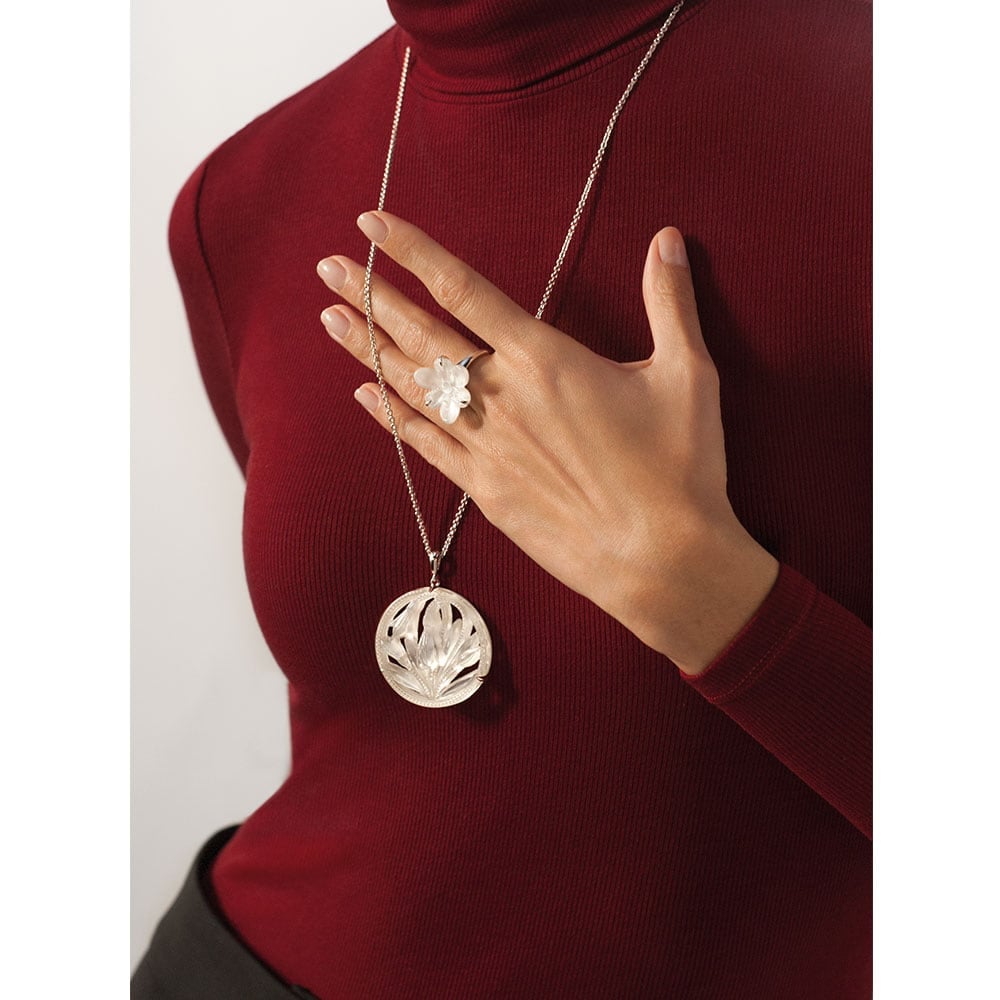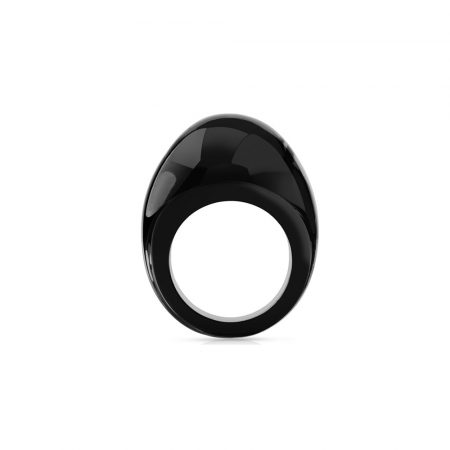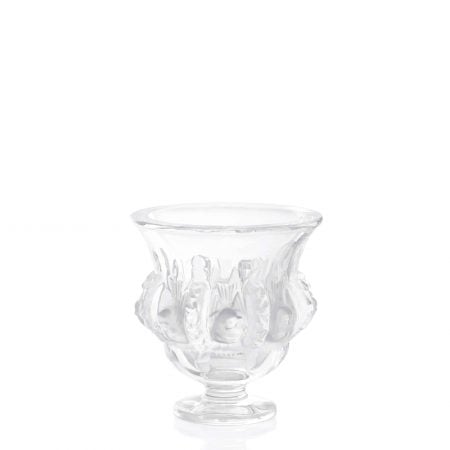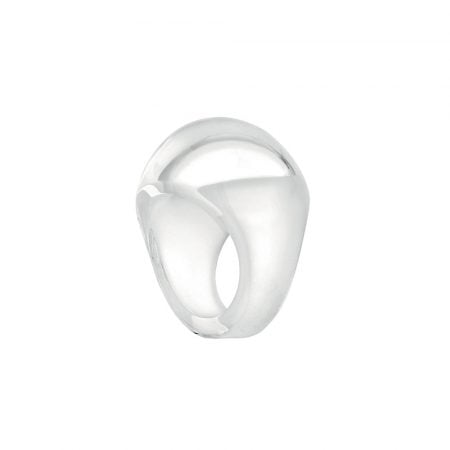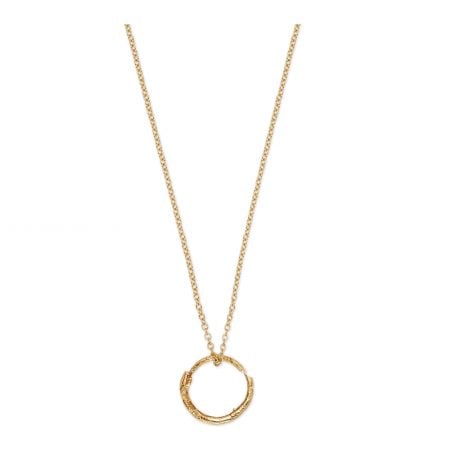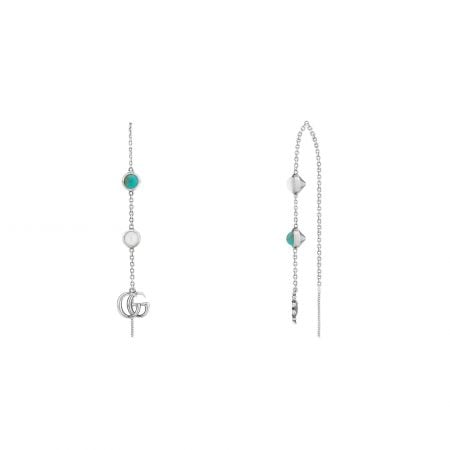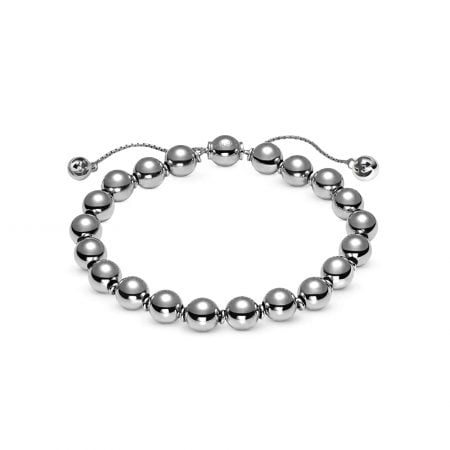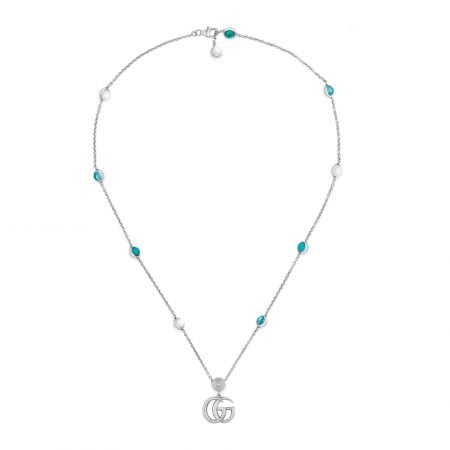Fleur De Neige Pendant
SKU: 10609900Fleur De Neige Pendant
Pearly clear crystal: 16.3 grams
Sterling silver, average weight: 28.2 g
Diameter of the pendant: 4.5 cm
Silver chain 70 cm
Available by order
Available by order
Contact us for the purchaseYou must have an account to manage your gift list
Log in or register
Fleur De Neige Pendant Lalique is part of a collection in collaboration with Opéra national de Paris. Inspired by The Snow Maiden Opera by Nikolai Rimski-Korsakov (1882), Fleur de Neige is presented in collaboration with Opéra national de Paris.
Fleur de Neige is sculpted in openwork pearly crystal. The pattern is inspired by the snowdrop that flourishes in late winter landscapes covered with melting snow. This flower motif is offered as a bas-relief medallion with a beaded accent or as a six-petal design to wear as a floral talisman.
The History of Lalique
René Jules Lalique was born in Aÿ-Champagne on 6 April 1860. Fascinated by the art of goldsmithing since his childhood, he decided to devote himself totally to goldsmithing. It was by working alongside the jeweler Louis Aucoc, son of art, who in 1877 bought the Parisian company Lobjois and then changed it into La Maison Aucoc, that René was able to form his career. Aucoc, in fact, deserves the merit of having taught him the techniques of goldsmithing, also transmitting to him a high aesthetic taste fed by the artistic current Art Nouveau. After his apprenticeship with the master, René Lalique attended the School of Decorative Arts in Paris, following courses in drawing and modelling. In 1978 his career continued in England, where he stayed for about two years.
Back in Paris, the young Lalique began working for Gariod, Jacta and Acnuacquistando, in 1886, the small company Jules Destape and then moved his laboratory to 20 rue Thérèse, in Paris. His name was echoed in the French upper middle class and entered, by merit, in the graces of the high rank of society. Sarah Bernhardt, La voix d’or del teatro e del cinema francese, entrusted René with a series of jewels such as the Tiara, designed by the illustrator Alfonso Maria Mucha. It was to the actress that René Lalique entitled an ivory medal in high relief depicting the face of the woman. The medal is now in the D’Orsay Museum.
The success of Lalique
The success of Lalique’s jewellery lies in its inspiration, in the beauty of nature and the charm of female nudity, typical features of Art Nouveau. His jewellery was distinguished by the variety of materials used. With glass, horn, enamels and ivory, she was able to model wonderful insects. His fame, together with Antonin Daum – son of the entrepreneur Jean Daum – and Emile Gallé grew thanks to the Universal Exhibition held in Paris in 1900.
In its complex path, surely generous of ingenuity, Lalique has left us jewels representing femme-fleu, sirens, jellyfish, peacocks, swans, butterflies, bees – the wings of the insects were realized with the technique of the “plique-à-jour-“, swans, Wagner themes. His works were noble, as demonstrated by the ivory orchid-shaped diadem, horn and small topaz in the middle, preserved in the Calouste Gulbenkian Museum in Lisbon. The jewel becomes the key to inscribing René Lalique’s technical mastery of the art of goldsmithing.
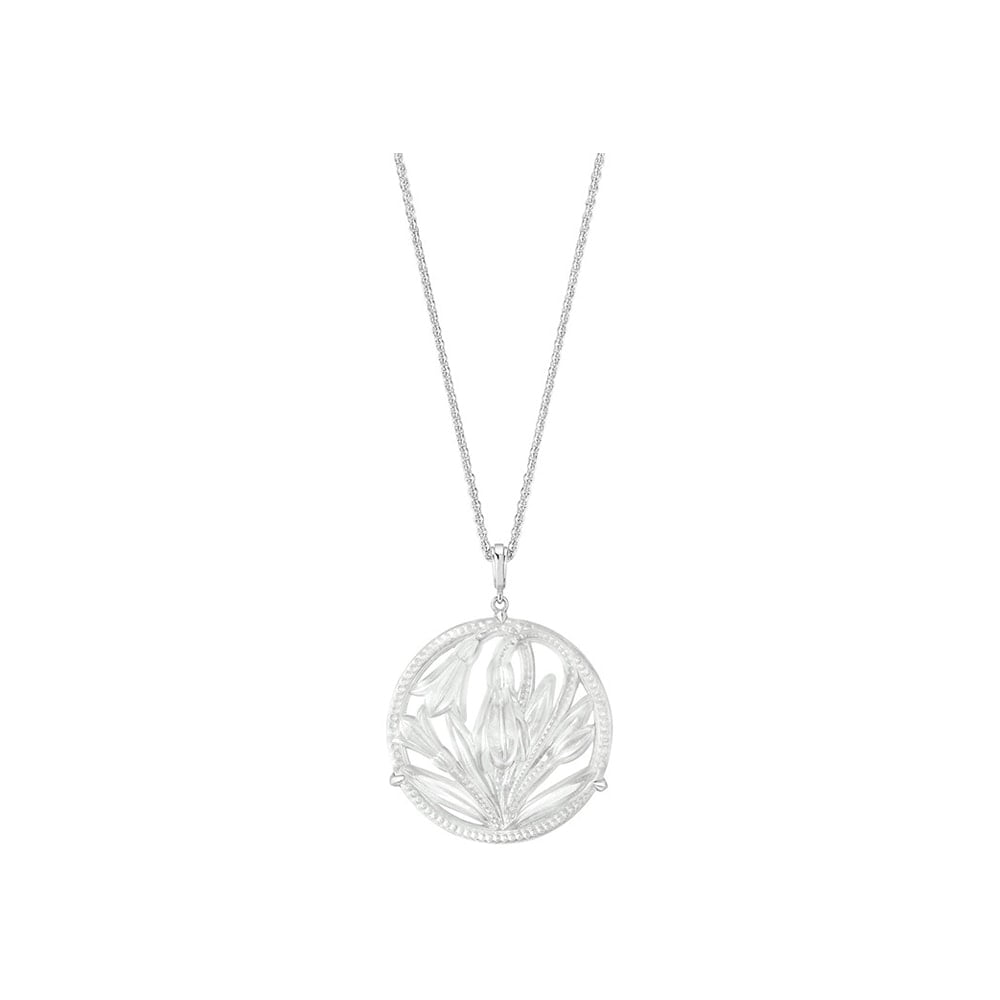
![10609900-fleur-de-neige-large-pendant1[1] Fleur De Neige Ciondolo Lalique](https://fecarotta-com.cdn-immedia.net/wp-content/uploads/2019/11/10609900-fleur-de-neige-large-pendant11.jpg)
